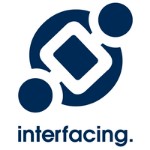Does this make sense? Yes, clarity in communication is crucial. It ensures messages are understood, reducing confusion and enhancing efficiency and collaboration.
“Does this make sense?” is a common question that arises in various situations, such as during a presentation, a conversation, or even in written communication. It is a question that reflects the need for clarity and understanding, and it is a crucial aspect of effective communication. The ability to convey information in a way that is easy to comprehend is a valuable skill that can benefit anyone, regardless of their profession or industry.

Understanding the concept of “does this make sense?” involves more than just ensuring that the message is clear. It also requires considering the context, the audience, and the purpose of the communication. Communication strategies play a vital role in achieving this goal. Whether it is through verbal or nonverbal cues, choosing the right language, or adjusting the pace and tone of the conversation, effective communication strategies can help to avoid miscommunication and build confidence and trust between parties.
Key Takeaways
- Effective communication involves more than just clarity of message, but also considering context, audience, and purpose.
- Communication strategies are crucial in achieving clarity and understanding.
- Building confidence and trust, avoiding miscommunication, and contextualizing information are key components of effective communication.
(Source: Harvard Business Review)
Understanding the Concept
Defining Clarity
Clarity is the quality of being easily understood. It is an essential aspect of communication, whether it is written or spoken. When something is clear, it means that it is free from ambiguity, confusion, or obscurity. In other words, does this make sense. Clarity is essential in every aspect of life, from personal to professional, and it is particularly important in academic writing.
Importance of Does This Make Sense
Does this make sense is a fundamental concept that is often taken for granted. However, it is crucial to ask does this make sense is not just about understanding the words, but also about comprehending their meaning. When asking does this make sense, it is logical, and it fits into a coherent framework. It is easy to follow and comprehend. Does this make sense is critical in communication, decision-making, and problem-solving.
In academic writing, asking does this make sense is essential because it helps the reader to understand the writer’s ideas and arguments. It also helps to convey the writer’s message effectively. Therefore, it is crucial to ensure that the writing is clear, concise, and logical.
According to an article by the Harvard Business Review, clarity is the antidote to confusion. The article emphasizes the importance of clarity in communication, decision-making, and problem-solving. It suggests that when things are not clear, confusion arises, and this can lead to mistakes, misunderstandings, and poor outcomes. Therefore, it is essential to strive for clarity in all aspects of life.
Communication Strategies
Effective communication is essential to explain complex ideas or concepts in a way that is easily understandable to the audience. Communication strategies are the techniques used to help clarify, simplify, and convey ideas to the audience in an effective manner. This section will cover some of the most effective communication strategies that can help you communicate your ideas more clearly and effectively.
Effective Explanation Techniques
Effective explanation techniques are essential for helping the audience understand complex ideas or concepts. One of the most effective techniques is to use analogies or metaphors to help explain complex ideas in a way that is easily understandable. Another technique is to use real-life examples to help illustrate the concepts being discussed. Additionally, breaking down complex ideas into smaller, more manageable parts can also help the audience understand the overall concept.
Audience Engagement
Engaging the audience is an essential part of effective communication. One of the most effective ways to engage the audience is to ask questions or encourage participation. This can help keep the audience interested and invested in the discussion. Additionally, using visual aids such as diagrams, charts, or videos can help keep the audience engaged and interested in the discussion.
Feedback and Confirmation
Feedback and confirmation are essential for effective communication. Asking the audience for feedback or confirmation can help ensure that the audience understands the concepts being discussed. Additionally, confirming that the audience has understood the concepts can help prevent misunderstandings and confusion.
To learn more about effective communication strategies, check out this article from MindTools, a high-authority resource on communication skills.
Handling Questions
When communicating with others, it is important to be able to handle questions effectively. This involves encouraging dialogue and providing clarification and further explanation when necessary.
Encouraging Dialogue
Encouraging dialogue is crucial in order to facilitate a productive conversation. One effective way to do this is by asking open-ended questions. For example, instead of asking “Do you understand?” which can often lead to a simple yes or no response, try asking “What are your thoughts on this?” or “Can you tell me more about what you’re thinking?” This allows the other person to express their thoughts and ideas more fully, which can lead to a more productive conversation.
Another way to encourage dialogue is by actively listening to the other person. This means paying attention to what they are saying, asking follow-up questions, and showing that you are interested in what they have to say. By doing this, you can create a more collaborative and productive conversation.
Clarification and Further Explanation
Sometimes, despite your best efforts, the other person may still have questions or need clarification. In these situations, it is important to provide clear and concise explanations. This can involve using visual aids, such as diagrams or charts, or breaking down complex concepts into smaller, more manageable parts.
It is also important to be patient and understanding when providing clarification. Remember that everyone has different levels of understanding and may need different types of explanations in order to fully grasp a concept. By being patient and willing to work through questions and misunderstandings, you can help facilitate a more productive conversation.
One resource that can be helpful in handling questions is the article “How to Answer ‘Does This Make Sense?’ During a Presentation” by the Harvard Business Review. This article provides tips and strategies for effectively handling questions and ensuring that your message is being understood.
Overall, handling questions effectively involves encouraging dialogue, providing clarification and further explanation, and being patient and understanding. By doing these things, you can create a more productive and collaborative conversation.
Contextualizing Information

The Role of Context
Context plays a crucial role in understanding information. It refers to the circumstances or setting in which something is presented or interpreted. By providing context, one can better understand the meaning and significance of information. For example, a statement that may seem confusing or contradictory on its own can be clarified by providing additional context.
Context can also help individuals evaluate alternatives and make informed decisions. By considering various factors such as the purpose, audience, and communication style, one can determine the most appropriate course of action. For instance, when presenting information to a diverse audience, it is important to consider their different backgrounds and perspectives to ensure effective communication.
Adapting to Different Scenarios
One must adapt to different scenarios when contextualizing information. This involves tailoring the information to suit the specific situation and audience. For example, when presenting technical information to a non-technical audience, it is important to use layman’s terms and provide explanations to ensure understanding.
Effective communication style is also a key factor in contextualizing information. It involves using the appropriate tone, language, and style to convey the message effectively. By using clear and concise language, one can ensure that the information is easily understood by the intended audience.
To learn more about contextualizing information, visit this source for additional information and resources.
Building Confidence and Trust

When it comes to effective communication, building confidence and trust is crucial. This is especially important when dealing with sensitive or complex topics. In order to foster an environment of mutual understanding, it is essential for both parties to feel confident in the information being shared and trust each other’s intentions.
Projecting Confidence
One way to build confidence is through the way information is presented. The speaker should be knowledgeable and clear in their delivery. They should also be able to answer any questions or concerns that may arise. This can be achieved through thorough preparation and research.
Body language also plays a significant role in projecting confidence. Maintaining eye contact, speaking clearly and calmly, and using appropriate gestures can all contribute to a speaker’s perceived confidence level. By projecting confidence, the listener is more likely to trust the information being presented.
Fostering Mutual Understanding
In addition to projecting confidence, it is important to foster mutual understanding. This can be achieved through active listening and acknowledging the listener’s concerns. By taking the time to understand the listener’s perspective, the speaker can tailor their message to better meet the listener’s needs.
Assurance is also important in building trust. The speaker should provide reassurance that they have the listener’s best interests in mind and that their intentions are genuine. By fostering mutual understanding and providing assurance, the listener is more likely to trust the speaker and the information being presented.
One resource that can be helpful in building confidence and trust is the Center for Nonviolent Communication. This organization provides resources and training on effective communication techniques that promote mutual understanding and trust.
Avoiding Miscommunication

Miscommunication can lead to confusion, misunderstandings, and even conflict. To avoid these negative outcomes, it is important to take steps to ensure clear and effective communication. In this section, we will discuss two key strategies for avoiding miscommunication: identifying potential confusion and ensuring you’re on the same page.
Identifying Potential Confusion
One of the most important steps in avoiding miscommunication is identifying potential sources of confusion. This can include unclear language, ambiguous statements, or assumptions about what the other person knows or understands. To identify potential confusion, it can be helpful to ask clarifying questions, rephrase what the other person has said, or summarize the key points of the conversation.
Ensuring You’re on the Same Page
Another important strategy for avoiding miscommunication is ensuring that both parties are on the same page. This means checking for understanding, confirming that you have the same goals or objectives, and making sure that everyone is clear on what is expected of them. This can be especially important when dealing with complex or technical information, or when working with people from different backgrounds or cultures.
To ensure that you’re on the same page, it can be helpful to use visual aids, such as diagrams or flowcharts, to help illustrate key concepts. It can also be useful to provide written summaries or follow-up emails to confirm what was discussed and agreed upon.
By taking these steps to avoid miscommunication, you can help ensure that your interactions with others are clear, effective, and productive.
For more information on avoiding miscommunication, check out this resource from MindTools.
Presentation Skills

When it comes to delivering a message effectively, presentation skills are crucial. A well-structured message can make all the difference in persuading an audience to take action. In this section, we will explore two key aspects of presentation skills: structuring your message and the art of persuasion.
Structuring Your Message
Structuring your message is the foundation of a successful presentation. It involves organizing your ideas in a logical sequence that is easy for your audience to follow. A good structure can help you convey your message clearly and effectively. Here are some tips for structuring your message:
- Start with a clear introduction that captures your audience’s attention and sets the tone for the rest of your presentation.
- Organize your ideas into sections or chapters that flow logically from one to the next.
- Use visual aids such as tables, charts, and graphs to help illustrate your points.
- Summarize your main points at the end of your presentation to reinforce your message.
For more information on structuring your message, check out this article by MindTools.
The Art of Persuasion
The art of persuasion is the ability to influence others to take action or change their minds. It is a key component of effective communication and can be used in a variety of settings, such as meetings, presentations, and negotiations. Here are some tips for mastering the art of persuasion:
- Understand your audience and tailor your message to their needs and interests.
- Use storytelling to make your message more relatable and memorable.
- Use persuasive language and techniques such as repetition, rhetorical questions, and emotional appeals.
- Anticipate objections and address them proactively.
For more information on the art of persuasion, check out this article by Forbes.
By mastering presentation skills such as structuring your message and the art of persuasion, you can become a more effective communicator and achieve your goals.
Effective Learning Methods

Learning is a continuous process and there are various methods that can be used to enhance the learning experience. This section will explore some of the most effective learning methods that have been proven to be successful.
Active Learning Techniques
Active learning techniques involve engaging the learner in the learning process rather than just passively receiving information. This can include activities such as group discussions, problem-solving exercises, and hands-on activities. By actively participating in the learning process, learners are more likely to retain information and develop a deeper understanding of the subject matter.
One effective active learning technique is the use of case studies. Case studies provide learners with real-world examples that they can apply to their own experiences. They encourage learners to think critically and develop problem-solving skills. A great resource for case studies is Harvard Business Review, which offers a wide range of case studies on various topics.
Another effective active learning technique is the use of simulations. Simulations allow learners to practice real-world scenarios in a safe and controlled environment. They can be particularly useful in fields such as healthcare and aviation where mistakes can have serious consequences. A great resource for simulations is Simulab, which offers a range of medical simulations.
Review and Reinforcement
Review and reinforcement are essential components of the learning process. They help learners to retain information and apply it in real-world situations. One effective method for review and reinforcement is the use of flashcards. Flashcards can be used to memorize key concepts, formulas, and vocabulary. A great resource for flashcards is Quizlet, which offers a wide range of flashcards on various topics.
Another effective method for review and reinforcement is the use of spaced repetition. Spaced repetition involves reviewing information at increasing intervals over time. This helps to reinforce the information in the learner’s memory. A great resource for spaced repetition is Anki, which offers a free, open-source flashcard program that uses spaced repetition.
In conclusion, effective learning methods involve active participation in the learning process and review and reinforcement of the material learned. By applying these techniques, learners can enhance their learning experience and develop a deeper understanding of the subject matter.
Professional Etiquette

When it comes to professional etiquette, it is essential to maintain a certain level of decorum and professionalism. Professional etiquette refers to the set of guidelines and rules that govern behavior in a professional setting. It includes everything from how you dress to how you communicate with your colleagues and clients.
Formal vs. Casual Communication
Communication is a critical aspect of professional etiquette. Knowing when to use formal or casual communication is essential. Formal communication is typically used in more serious or professional situations, such as when communicating with clients or superiors. On the other hand, casual communication is more relaxed and can be used when communicating with colleagues or subordinates.
It is important to note that even in casual communication, certain boundaries should not be crossed. For example, using inappropriate language or discussing sensitive topics should be avoided.
Email and Written Correspondence
Email and written correspondence are also essential components of professional etiquette. When writing emails or other forms of written communication, it is important to be clear and concise. In addition, proper grammar and spelling should be used to convey a professional image.
When writing emails, it is also important to consider the tone and content of the message. Emails should be written in a professional tone, and any sensitive or confidential information should be handled with care.
Overall, maintaining a high level of professional etiquette is essential for success in any professional setting. By following these guidelines, individuals can ensure they are presenting themselves in the best possible light.
For more information on professional etiquette, please visit The Balance Careers.
Frequently Asked Questions

What are some alternative phrases to ‘Does this make sense’?
There are several alternative phrases that can be used instead of ‘Does this make sense’. Some of these phrases include ‘Is this clear?’, ‘Do you understand?’, ‘Am I being clear?’, ‘Is there anything you’d like me to clarify?’ and ‘Can I provide more context?’. These phrases help to ensure that the listener understands the message being conveyed.
How can you determine does this make sense?
Determining does this make sense depends on the context and the person’s understanding of the topic. One way to determine does this make sense is to ask questions and seek clarification. Another way is to consider whether the information aligns with what is already known about the topic. Additionally, it can be helpful to break down complex concepts into smaller, more manageable parts.
What is the meaning behind the phrase ‘Does this make sense’?
The phrase ‘Does this make sense’ is used to confirm whether the listener understands the message being conveyed. It is often used in situations where complex or technical information is being discussed. The speaker may use this phrase to check if they need to provide further explanation or clarification.
Can you provide examples where ‘Does this make sense’ is used appropriately?
‘Does this make sense’ is commonly used in educational and professional settings. For example, a teacher may ask their students ‘Does this make sense?’ after explaining a difficult concept. In a business meeting, a presenter may ask their colleagues ‘Does this make sense?’ to ensure that everyone is on the same page.
In what context would ‘Does this make sense’ be considered a valid question?
‘Does this make sense’ is considered a valid question in any context where information is being communicated. It is particularly useful in situations where technical or complex information is being discussed. The phrase can be used to confirm that the listener understands the information being conveyed.
Is the phrase ‘It makes sense’ grammatically correct?
Yes, the phrase ‘It makes sense’ is grammatically correct. The phrase is used to indicate that the listener understands the information being conveyed.
For more information on effective communication, check out this article from MindTools, a resource with high authority on the topic.
Compare hundreds of Collaboration Software in our Software Marketplace















